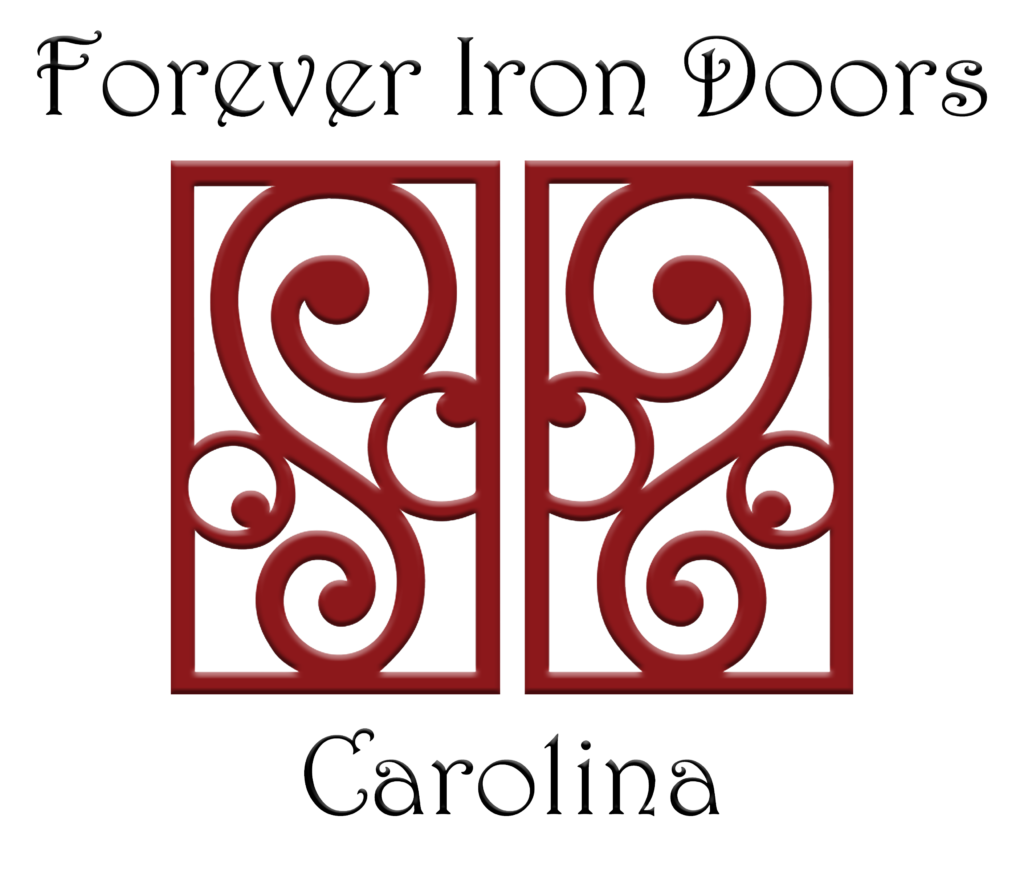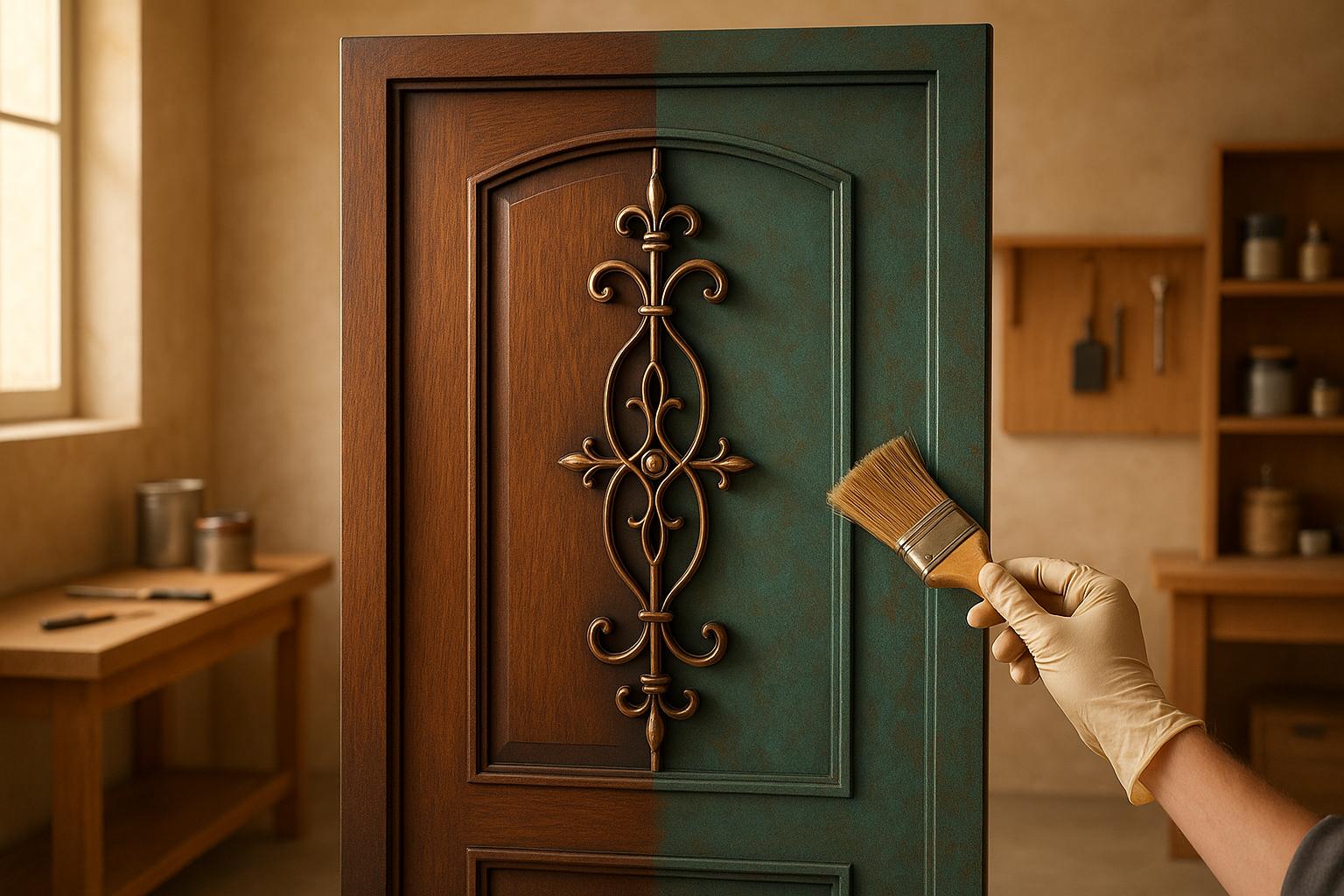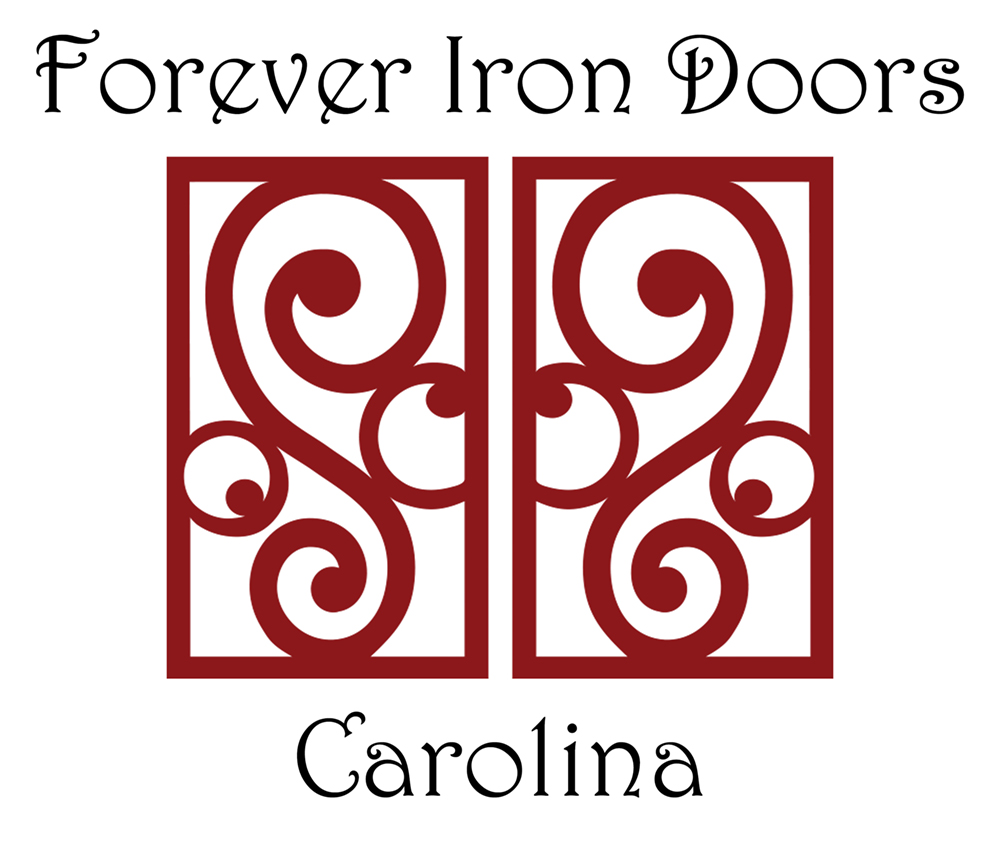Faux painting is a cost-effective way to transform iron doors, mimicking materials like bronze, copper, or wood without sacrificing durability. This technique not only enhances the aesthetic but also ensures long-lasting finishes with minimal maintenance. To achieve professional results, follow these steps:
- Prepare the Surface: Clean thoroughly, remove rust or old paint, and apply a metal primer to ensure proper paint adhesion.
- Gather Tools: Use brushes, sponges, and specialized tools like wood graining kits for texture.
- Choose Materials: Opt for metal-specific primers, paints with real metal dust for patinas, and protective clear coats.
- Apply Techniques: Layer colors for aged metal effects, use chemical sprays for rust patinas, or layer metallic tones for antique finishes.
- Protect the Finish: Seal with a clear coat to guard against wear and weather.
With proper care, including regular cleaning and occasional touch-ups, faux-painted iron doors can remain visually stunning for years. This method combines artistic flair with practicality, making it an excellent choice for upgrading your entryway.
Tools and Materials You’ll Need
To create a professional faux finish on your iron door, you’ll want to have the right tools and materials on hand. Being prepared not only makes the process easier but also ensures you achieve the look you’re aiming for. Below, we’ll go over the tools, materials, and safety gear you’ll need for a smooth and effective project.
Tools for Faux Painting
The success of your faux painting project starts with having the right tools. Brushes will be your go-to items – make sure you have a variety of sizes. Wide brushes are great for base coats, while smaller artist brushes are perfect for adding fine details. Use natural bristle brushes for oil-based paints and synthetic ones for water-based products. Keeping your brushes clean throughout the process will help you maintain crisp, professional results.
Sponges and rags are also must-haves. Natural sea sponges are excellent for creating realistic textures, while clean cotton rags are ideal for blending colors and removing excess paint to achieve that weathered, aged look.
For specialized textures, invest in wood graining tools. These tools come in different price ranges and are excellent for adding unique patterns to metal surfaces. Foam craft brushes are also handy, especially for applying patina effects and working around tricky areas like door hardware.
Materials You’ll Need
Once you’ve got the tools, it’s time to gather the materials that will bring your vision to life. Start with a metal primer designed specifically for iron surfaces. This step is crucial for protecting the metal and ensuring the paint adheres properly.
For creating patina effects, look for chalk paints that contain real metal dust. Products like Dixie Belle Paint Company’s Iron, Copper, and Bronze Metal Paints work particularly well when paired with Green and Blue Patina Sprays. Follow the product instructions to determine how many coats are needed for the best results.
Oxidizing patina sprays are another great option, as they create genuine chemical reactions with metal paints. For a rusted iron look, use iron metal paint with green patina spray. If you’re going for copper or bronze finishes, pair the corresponding metal paint with blue patina spray.
Traditional faux finishes can also be achieved with acrylic or oil-based paints. For a DIY patina, you can combine matte black spray paint, copper acrylic, and a turquoise or spring green accent. To mimic rust, apply dark brown and yellow-brown paints in random patterns for a natural effect.
Rock salt is an excellent masking agent if you want to create pitted, weathered textures. For vertical surfaces, lighter materials like sawdust or confetti adhered with water-soluble glue can produce similar effects.
Lastly, don’t forget clear protective coats and sealants. These are essential for preserving your finish and making it weather-resistant. Typically, you’ll need multiple coats of primer, paint, and clear sealant to ensure durability.
Safety Gear to Keep in Mind
Safety should always be a priority during any painting project. Start with safety glasses and a dust mask or respirator to protect yourself while sanding, as the dust can irritate your eyes and lungs.
If you’re using cleaning agents like TSP (trisodium phosphate), wear safety goggles, rubber gloves, and protective clothing to avoid skin and eye irritation.
Ventilation is another critical factor. If you’re working with oil-based paints, it’s best to work outdoors whenever possible. If you must work indoors, open windows and use fans to keep the air circulating. Always wear gloves and a mask when handling these paints.
As one expert wisely puts it:
"The trick to painting patina is to experiment and practice." – HOT ROD Staff Writer
Preparing the Iron Door Surface
Getting your iron door ready for faux painting is the most important step of the entire process. A well-prepared surface ensures your finish will not only look polished but also stand the test of time. Skipping or rushing through this step can lead to peeling paint and poor adhesion.
Cleaning and Degreasing the Surface
Start by giving the door a thorough cleaning to remove dirt, grease, and grime – anything that could prevent the paint from sticking. Even if the door looks clean, this step is non-negotiable.
Mix 1 teaspoon of vegetable-based soap with water until it forms suds. Use this gentle mixture to protect the metal while cleaning. Dip a soft, clean cloth into the solution and wipe the door from top to bottom. This method keeps dirty water from dripping onto areas you’ve already cleaned.
After washing, rinse the door thoroughly with clean water to remove all soap residue. Dry the surface completely with a clean cloth to prevent water spots.
If the door has stubborn grease or industrial residue, use mineral spirits to tackle those tough spots. This is especially important for doors exposed to things like cooking grease or automotive fluids. Once you’ve used the mineral spirits, rinse the door again with water to remove any leftover residue.
With the surface clean and dry, you’re ready to deal with any old paint or rust that might interfere with the finish.
Removing Old Paint or Rust
If your door has old paint or rust, you’ll need to address these issues before painting. Removing these elements ensures your new finish adheres properly and looks smooth.
For surface rust, use a wire-metal brush or sandpaper to scrape away loose particles. Pay close attention to areas where moisture tends to collect, like the bottom rail or around decorative features.
For tougher rust, sand the affected areas with medium to fine grit sandpaper. If you’re working on larger sections, a power drill with a sanding attachment can save time and effort. A wire brush attachment on the drill is also great for peeling paint removal.
Chemical rust removers can make the job easier. Apply a rust dissolver according to the manufacturer’s instructions to break down stubborn rust. Many of these products use phosphoric acid to convert rust into a stable compound. After the rust dissolver dries, wipe the surface with a clean rag to remove any remaining debris.
For lighter rust, natural solutions like white vinegar can also do the trick.
If you’re dealing with old paint, products like citrus strip are effective for removing it. For smaller areas, a needle scaler might be a better option. For extensive rust removal, a knotted wire wheel on a grinder works well, but it requires extra care and safety precautions.
Avoid abrasive materials like scouring pads or steel wool, as well as harsh cleaners like bleach or high-alkaline solutions. These can damage the metal surface or cause chemical reactions that might create problems later.
Once your door is clean and rust-free, it’s time to apply a primer that will protect the metal and provide a strong base for your paint.
Applying a Metal Primer
After cleaning and removing rust, apply a metal primer immediately to prevent oxidation. Primer is key for painting wrought iron, as it helps the paint adhere better and protects against rust.
Choose a primer specifically designed for metal and rust prevention. This creates a solid foundation for your faux finish. Some metal paints even come with a built-in rust-inhibiting primer, which can save you a step if you’re aiming for a straightforward finish.
Apply the primer evenly, making sure to cover every crevice, corner, and detail where moisture might collect. These areas are the most vulnerable to rust and need extra attention.
Once the primer is dry, follow up with your chosen metal paint right away to lock everything in place. Avoid letting the primed surface sit exposed for too long, as this can weaken the primer’s effectiveness and allow moisture to seep in.
Proper surface preparation might take some time, but it makes all the difference. A clean, smooth, and primed surface ensures your faux finish not only looks great but also holds up against wear and tear for years to come.
Step-by-Step Faux Painting Techniques
Once your iron door is prepped and primed, it’s time to dive into faux painting techniques that can completely transform its look. These methods can give the metal a sense of history and charm, making it appear aged, weathered, or even naturally rusted. Let’s explore how to create these stunning finishes.
Creating an Aged Metal Effect
An aged metal effect brings a vintage vibe to your door by layering colors to build depth and texture. This approach works especially well on wrought iron doors with intricate designs, as it highlights decorative elements.
Start by applying a neutral base coat, such as a greige tone, to create a solid foundation. Make sure to cover every detail evenly, then let it dry completely before moving forward.
Next, add a glaze layer to introduce dimension. Mix the glaze with a slightly darker shade than your base coat and work in small sections. Use a brush to apply the glaze, then immediately manipulate it with a rag or sponge. This allows the glaze to settle into crevices while keeping raised areas lighter.
Once the glaze is set, use a dry brush technique with metallic paints to add a subtle sheen. Lightly dip your brush into metallic paint, remove excess on a paper towel, and gently brush over raised details where natural wear would occur. This step creates highlights that catch the light beautifully.
To take it a step further, apply a patina solution sparingly to areas like corners, joints, and around door handles – places where aging would naturally occur. Finish by working dark aging wax into recessed areas and buffing the raised surfaces to amplify contrast. With patience and attention to detail, you’ll achieve a refined aged metal look.
Replicating a Rust Patina Finish
A rust patina finish mimics the natural rusting process, complete with layered textures and shifting colors. Start by thoroughly cleaning the metal surface with mineral spirits or a similar agent, then wipe it down with a lint-free cloth.
For inspiration, observe real rust patterns – notice how it transitions from orange-brown to deep reddish tones, darkening in heavily weathered spots.
To replicate this effect chemically, begin by spraying the clean surface with white vinegar, letting each application dry to create an acidic base. Then, mix a rust accelerator solution using hydrogen peroxide (3%), vinegar, and table salt. Spray this solution onto the surface repeatedly, allowing the rust to develop to your desired level.
Engineer Laral from Instructables explains this process:
"This instructable will show you a fast, safe method, using common household chemicals that you probably already have, to produce a rich rust patina on iron and steel to give it a weathered, aged appearance." – Laral, Instructables
Safety is key, so wear goggles, chemical-resistant gloves, and work in a well-ventilated area to avoid inhaling fumes. For an even finish, you can also pickle the metal with vinegar before applying the rust accelerator.
(Method adapted from Instructables guidelines)
Once you’ve mastered the rust patina, you’re ready to explore more layered techniques for an antique finish.
Achieving an Antique Finish
An antique finish builds on layering techniques to create a rich, weathered look with subtle variations. Start with a dark base coat, like deep brown or black, to act as the shadow color in recessed areas. Then, use a dry brush to apply thin, uneven coats of your main color, allowing imperfections to enhance the aged effect.
To add complexity, layer metallic tones. Begin with darker shades like bronze or copper, then add lighter accents such as gold or silver on edges and raised details where light would naturally hit. Blend these tones with a soft, dry brush or cloth for smooth transitions.
For added character, lightly sand areas like edges, corners, and high-touch spots to reveal base layers and create a distressed look. Seal the finish with a protective clear coat to lock in the effect and ensure durability.
Protecting the Finish with a Clear Coat
After investing time in your faux finish, protecting it with a clear coat is crucial. This step not only preserves the look but also adds durability and weather resistance. For exterior doors, choose a UV-resistant polyurethane or acrylic clear coat. For interior doors, a lighter-duty option will suffice.
Apply thin, even layers of clear coat, working from the top of the door downward to avoid lap marks. Keep a wet edge as you work and allow each layer to dry according to the manufacturer’s instructions. Multiple thin coats are better than one thick layer to prevent drips and ensure a smooth finish.
The clear coat not only shields your faux finish from wear and tear but also makes cleaning easier, helping you maintain the stunning look you’ve achieved. With these techniques, your door will boast a finish full of character and charm.
sbb-itb-cd90297
Maintaining Faux Painted Iron Doors
Your faux painted iron door is more than just an entryway – it’s a statement piece. To keep its aged metal, rust patina, or antique finish looking as stunning as the day it was installed, regular care is key. With the right upkeep, you can ensure it remains a standout feature for years to come.
Routine Cleaning and Maintenance
Start by giving your door a gentle clean using a mild soap solution. For tougher grime, try a non-toxic, biodegradable cleaner like Simple Green or an alcohol-based solution . These options are effective without being harsh on the finish.
Steer clear of concentrated bleach, highly alkaline cleaners, or abrasive scrubbers, as these can harm the surface . Instead, use soft cloths or sponges to wipe the door carefully. Pay special attention to intricate areas where dirt tends to collect, especially if your door features detailed metalwork, like those from Forever Iron Doors Carolina.
Once cleaned, rinse thoroughly with clean water and dry the surface with a soft cloth to avoid water spots or rust. For best results, aim to clean your door at least twice a year. If you live in a coastal area with salty air, consider cleaning it quarterly to combat the accelerated wear caused by the environment. Regular cleaning also allows you to spot any areas that might need repairs.
Touch-Up and Resealing Tips
After cleaning, it’s time to inspect your door for any signs of wear. Check every three months for rust, corrosion, fading, or chips in the finish. If you notice any damage, address it immediately by applying touch-up paint. Quick action can prevent small issues from turning into larger problems.
For repairs, start by cleaning the damaged area thoroughly. If bare metal is exposed, apply a primer before layering and blending paint to match the original finish. This step ensures a seamless look.
To protect the finish, apply a wax-based sealant every six months – or quarterly if you live in a high-humidity area. Polishing the door with wax or linseed oil can also enhance its shine and provide extra moisture resistance.
Repainting is another essential part of maintenance. Plan to repaint every 3–5 years, or sooner if your door is exposed to harsh weather conditions. Staying on top of these touch-ups not only preserves the door’s appearance but also simplifies long-term maintenance. With consistent care and timely repairs, your iron door will continue to combine beauty and durability for years to come.
Conclusion
Faux painting turns ordinary iron doors into eye-catching design elements by combining artistic techniques with durable finishes. It all begins with careful preparation – cleaning, degreasing, and priming the surface to ensure the paint adheres properly. From there, you can experiment with techniques like mimicking aged metal, creating a rust patina, or achieving a timeless antique effect.
Once the surface is ready and you’ve chosen your technique, the focus shifts to achieving a flawless finish. Controlled brushwork is key – lightly dabbing off excess paint before applying it can help you create smooth textures or bold contrasts, depending on your vision.
What sets faux painting apart is the creative freedom it offers. Unlike standard finishes, these techniques let you customize the look to complement any architectural style or design preference, whether it’s the rustic charm of weathered metal or the elegance of an antique finish.
Beyond its aesthetic appeal, faux painting also adds durability. Using quality materials and applying multiple layers – primer, paint, and protective sealants – helps resist chipping, fading, and everyday wear and tear. For the best results, add a second coat of paint within an hour of the first to enhance adhesion and finish quality.
With regular care and occasional touch-ups, your faux-painted iron door can remain a stunning focal point for years. This blend of artistry and practicality not only elevates your home’s curb appeal but also ensures the finish stands the test of time. It’s a fantastic option for anyone looking to make a bold statement with their entryway.
For more tips on perfecting and maintaining your faux finish, check out Forever Iron Doors Carolina.
FAQs
How can I properly maintain a faux-painted iron door to keep it looking great and lasting longer?
To keep your faux-painted iron door looking its best, give it a regular cleaning using a soft cloth or sponge with mild soap and warm water. Steer clear of harsh cleaners like ammonia or bleach, as these can harm the finish. Adding a protective topcoat or wax can also shield the door from moisture and weather, helping the faux finish last longer.
Make it a point to check the door now and then for any chips or scratches. If you spot damage, touch it up right away using paint specifically made for wrought iron to keep rust at bay. If you live in a humid or coastal area, take extra care by wiping away water and dust often. This simple habit can help minimize rust and keep your door looking great.
What materials and tools do I need for creating faux painting effects on iron doors?
To create eye-catching faux painting effects on iron doors, start by using paints specifically formulated for metal surfaces. This ensures the finish is both durable and long-lasting. For effects like metallic sheens or textured designs, opt for specialty faux paints or textured finishes. Tools like sponges, brushes, rollers, and stippling brushes can help you achieve looks such as rust, aged patinas, or even wood grain. For a sleek metallic finish, high-quality brushes or spray equipment are your best bet.
Think about the final look you’re aiming for when selecting tools and materials. For instance, sponges work well for layered textures, while brushes are better suited for intricate details. Before diving in, test your chosen tools and paints on a small, inconspicuous area to make sure you’re happy with the result. With the right approach and a touch of creativity, you can turn your iron door into a stunning focal point.
What safety measures should I follow when using paints and chemicals for faux painting iron doors?
When working with paints and chemicals for faux painting iron doors, safety should always come first. Start by wearing the right personal protective equipment (PPE) – this means gloves to protect your hands, safety goggles for your eyes, and a mask to avoid inhaling harmful fumes that could affect your health. Make sure you’re in a well-ventilated space, or use a fan to keep fresh air circulating, especially when working with solvent-based products.
Take the time to read and follow the instructions on the labels of paints and chemicals. Misusing these products can lead to accidents or damage. Steer clear of harsh chemicals like bleach, as they can harm both the surface you’re working on and your health. Once you’re done, clean your tools and workspace thoroughly. This not only keeps things safe but also helps your equipment last longer.



